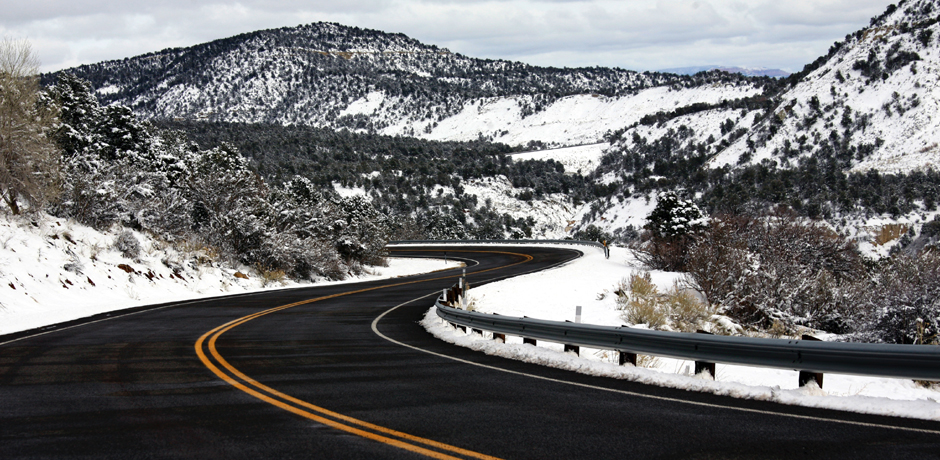You’ve probably heard or read recommendations that winter tires be used even on dry or wet pavement at temperatures well above freezing, often around seven degrees Celsius. This might sound strange to anyone who has driven many types of tires aggressively, and found winter tires to feel slippery and mushy even at temperatures far below that. This quote from The Globe and Mail article When Should I Switch Over to Winter Tires is typical of what one might read:
“The rubber in all-season tires starts to harden – think hockey puck – when the temperature drops below 7C. The harder it gets, the less traction tires have.”
Does that mean that winter tires outperform all-season tires at those temperatures?
Car and Driver tested this back in 2009 using some of the most highly respected tires in the industry: Michelin’s Pilot line of performance all-season and winter tires, along with their X-Ice Xi2 studless winter tire. They performed braking and skidpad grip tests on both dry and salty wet pavement at -5C, and in snow at -11C. The results are surprising to anyone who has echoed the mantra that winter tires outperform all-seasons in cold temperatures.
The high performance Pilot Sport high performance all-season easily beat the X-Ice Xi2 at -5C in both conditions, stopping from 60 mph in 128 feet in the dry and 139 feet in the wet, compared to 158 and 174 for the X-Ice. The Pilot MXM4 touring all-season was very close to the Sport at 130 and 140, while the Pilot Alpin high performance winter tire put up respectable 141 and 145 foot stops.
Of course, in the snow it was a different story, with the Pilot Sport all-season requiring 123 feet to stop from only 30 mph, while the X-Ice needed only 83 feet. The Pilot touring and Alpin tires measured 105 feet and 95 feet, respectively, confirming that one tire simply can’t do everything well.
So why do the manufacturers want you to install winter tires so early in the fall and leave them on so late in the spring? Do they just want you to wear them out faster and buy more tires? Probably, but that’s only a side benefit. Their recommendation is simply one of caution, just like when modern cars warn their owners of slippery conditions on perfectly dry, clear, and moisture free roads. If the ground is cold and the air is warm, a thin layer of ice could form on the road that would render any tire without a suitable rubber compound and adequate biting edges – particularly in the form of siping – ineffective. This is primarily a concern in the spring. In the fall, when the ground is still too warm for ice formation, bridges can be colder than the ground and become dangerously slippery with a thin layer of ice if the air temperature is near freezing.
So use knowledge and common sense to determine when to change your tires, and adjust your driving according to the road conditions and the capabilities of your choice of tires.
